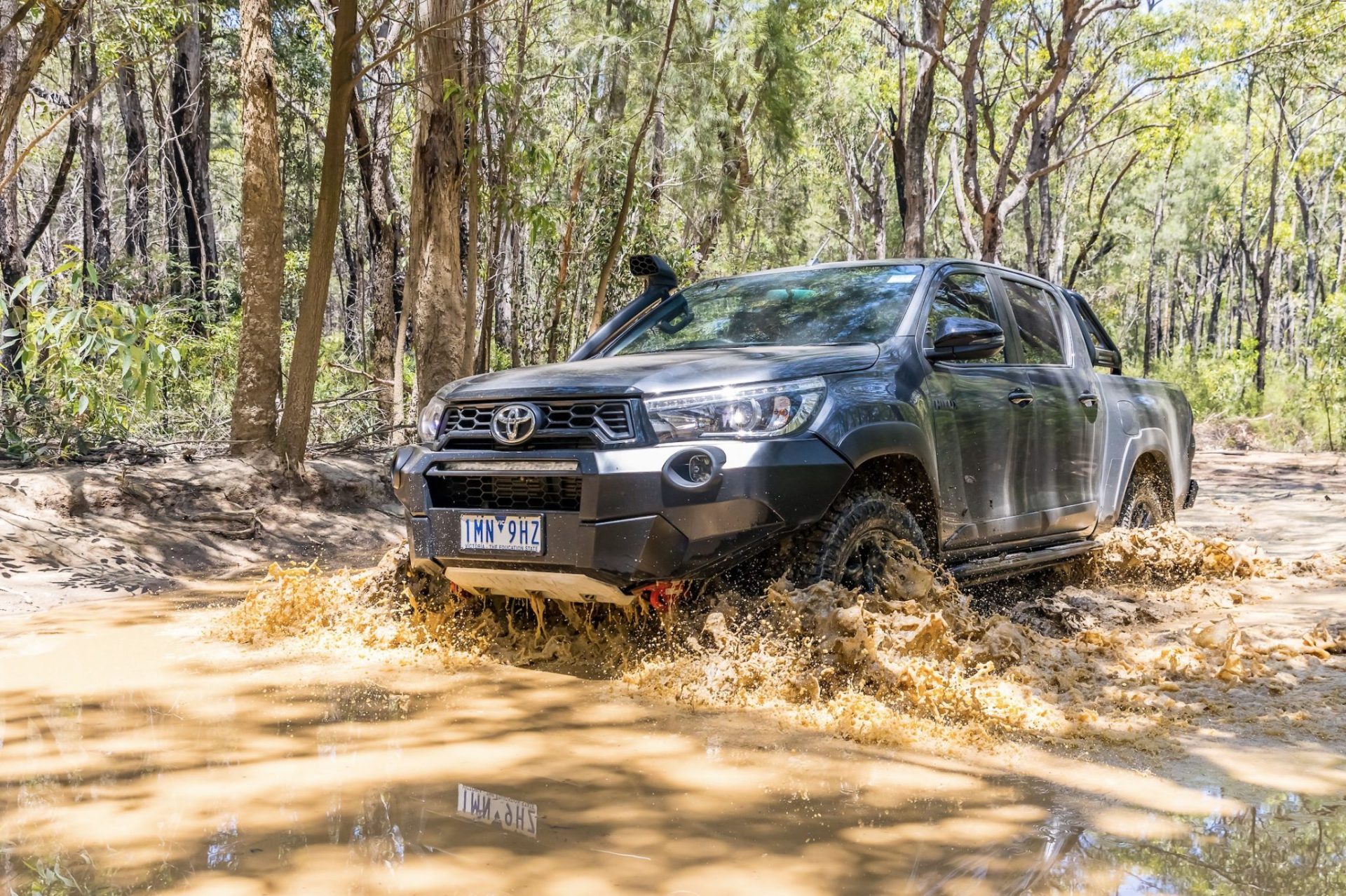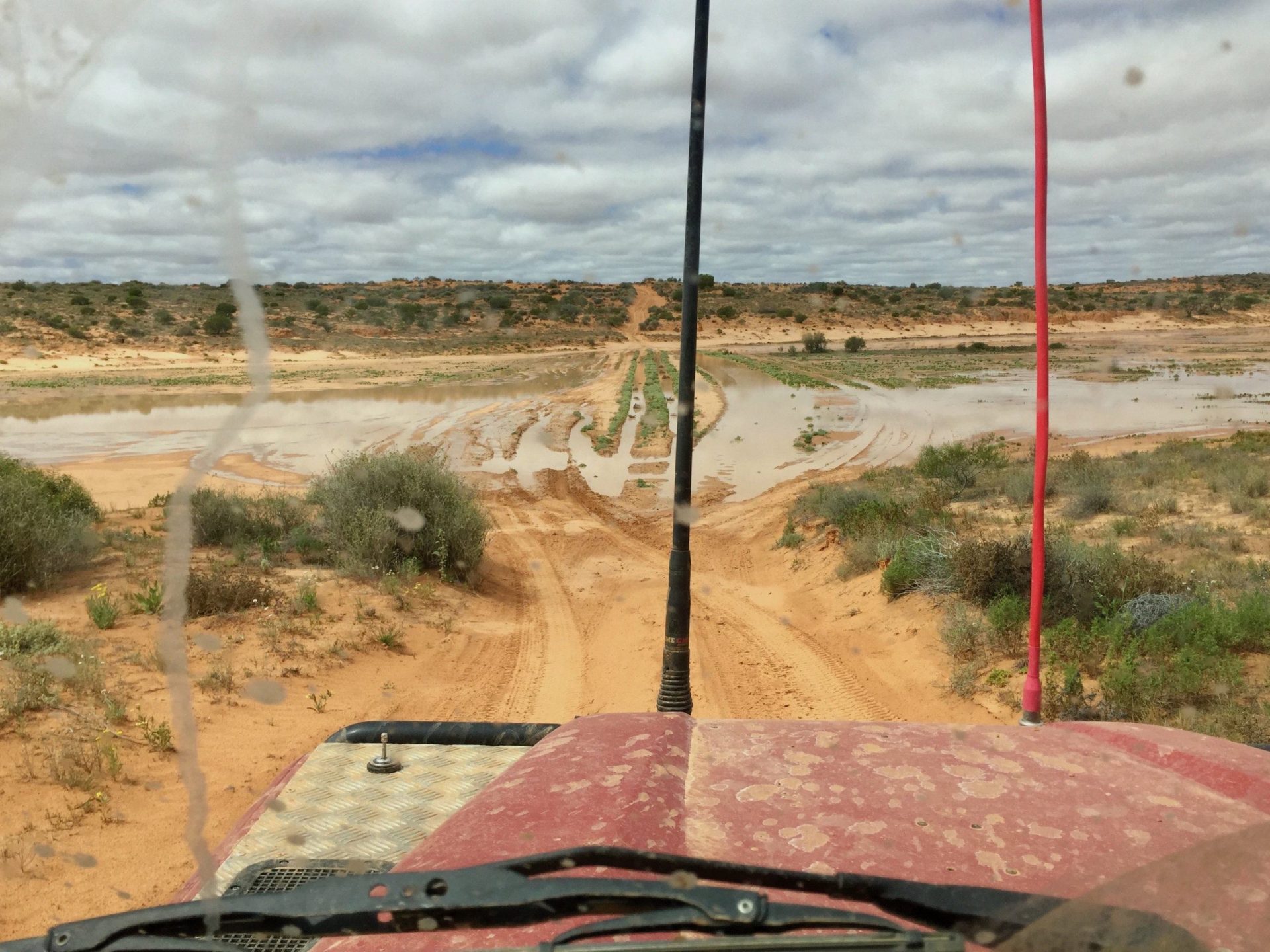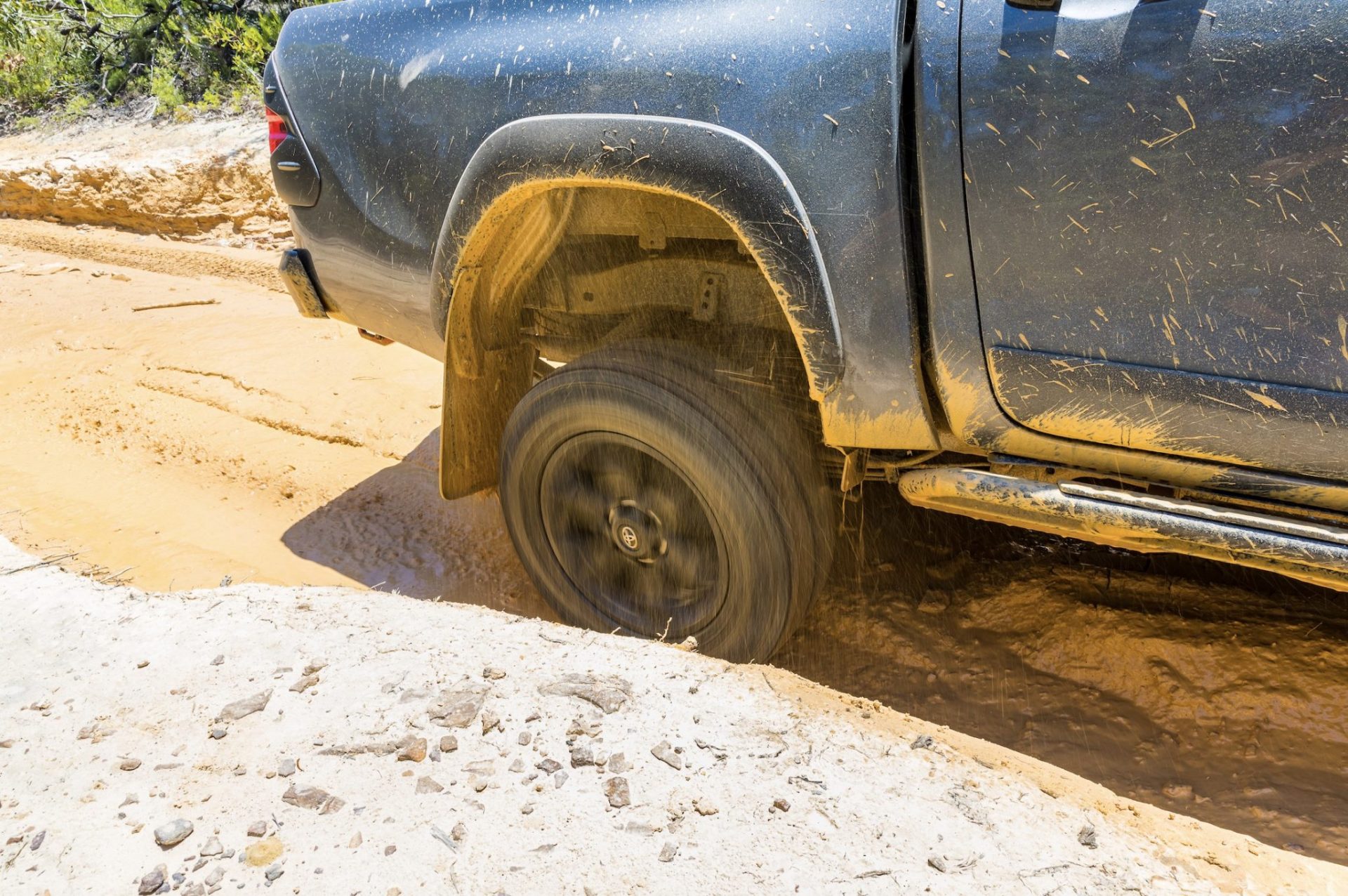Advertisement
Advertisement
In How To Mud Driving Part 2, we’re going to take a look at the different types of mud you’re likely to encounter when you’re out four-wheel driving.
In Part 1 of our series on Mud Driving we discussed why you really shouldn’t do it… unless there’s no alternative, that is. And if you drive off-road often enough, there will eventually be a time when driving through mud is unavoidable, whether you’re near the coast, up in the High Country or in Central Australia.
The first thing you need to do when confronted with mud is to examine it. Yes, that’s right, you’ll need to get out of your 4×4 and have a look – and feel – around. There are many different types of mud depending on where you are, and they all have different consistencies that can result in different outcomes when you try to drive through them.

Track Mud
The most common mud you’ll likely encounter when driving will be found along most unsealed tracks after rain. Usually, if you’re on a formed track, the mud will pool in recesses in the wheel tracks and it will be cloudy so, unless it’s obviously shallow, you won’t really know how deep it is until you get out of your vehicle and poke a stick into it.
As well as feeling for depth, you’ll want to run the stick along the length of both wheel tracks to make sure there aren’t any submerged obstacles, or any deep holes. Also try to feel for the consistency of the base. Mud puddles along formed tracks will usually offer a pretty solid base, so traction shouldn’t be an issue, but this is not always the case; if there have been several vehicles through before you, and a few of them have spun wheels to get through, that solid track base can quickly turn into a sloshy one.
The wheel tracks in some mud puddles that have seen a lot of traffic can become so deep that you’ll run out of ground clearance before you get through; these will usually be easy to spot as there will likely be chicken tracks (alternative routes) around the mud puddles. These chicken tracks can present problems of their own; as they can lead you away from the original formed-track they can actually have a far softer and stickier base than the original mud hole. Also be aware of protruding tree roots and other sharp objects like rocks that might be poking out the sides of wheel tracks, as these unseen hazards can easily tear a tyre sidewall open, especially if you need to spin wheels to get out of the mud hole.

Outback and desert mud
As the outback is generally flat country, occasional rains can cause all kinds of havoc as there’s often nowhere for the water to run-off. Unsealed roads and tracks that were once covered in dry bulldust can quickly turn into slippery quagmires after even just a small amount of rain, which is why so many outback roads are marked as dry-weather only.
If an outback road is listed as ‘closed’, do not drive along it. Even if you don’t get stuck, your vehicle will cause track damage that can be expensive for local councils to repair.
While it might seem strange for there to be mud in desert country, there are plenty of claypans that can look rock-hard on top but which are muddy and boggy just below the surface. If your vehicle breaks the surface of a claypan, it can quickly become stuck in the mud beneath, so have a good look around on foot before diving in with your 4×4, especially if there are no other tracks to be seen. If there are other tracks, walk them to feel if the surface is muddy or not.

Black soil mud
Black soil mud is some of the most treacherous mud you’re ever likely to encounter, simply because it’s so damn slippery; and this slippery surface proves that mud doesn’t have to be deep to cause trouble.
You’ll often find this type of soil near creeks and rivers and, once wet, it can be almost impossible to stand on, let alone drive on. If you do drive on it, you will not only find it difficult to maintain forward progress, but it will be hard to stop if you’ve built up any momentum and steering can also be problematic.
If you happen upon black soil mud, at least walk it first (but be careful, because chances are you’ll end up on your backside), but better yet, look for an alternative route or wait for it to dry out.
So far, we’ve only talked about mud on flat ground, but where mud gets really interesting is when its on steep hills, especially ones you’re trying to descend… but we’ll get to that in another installment.